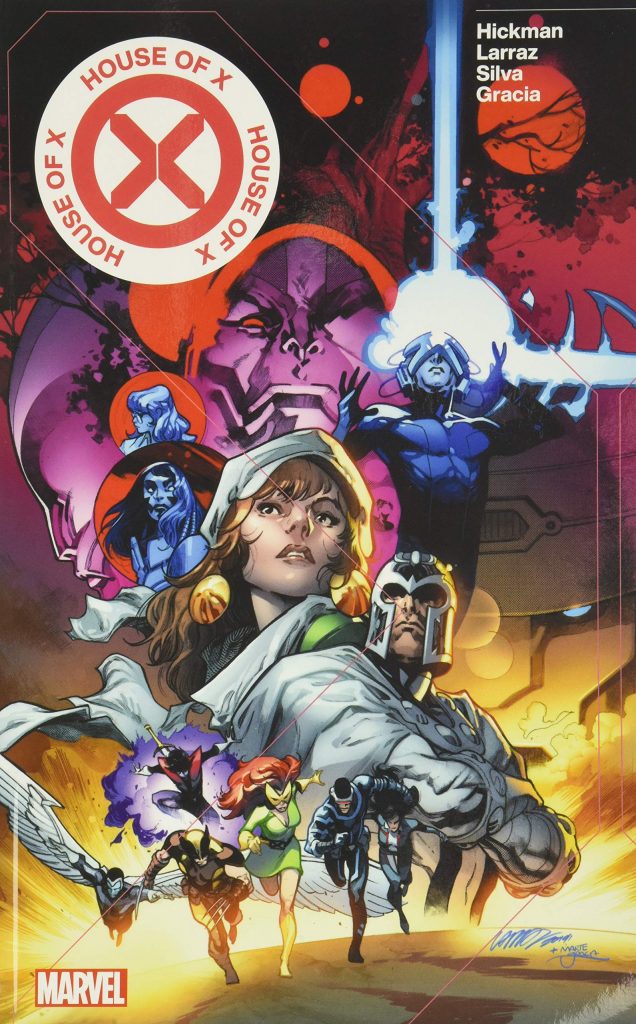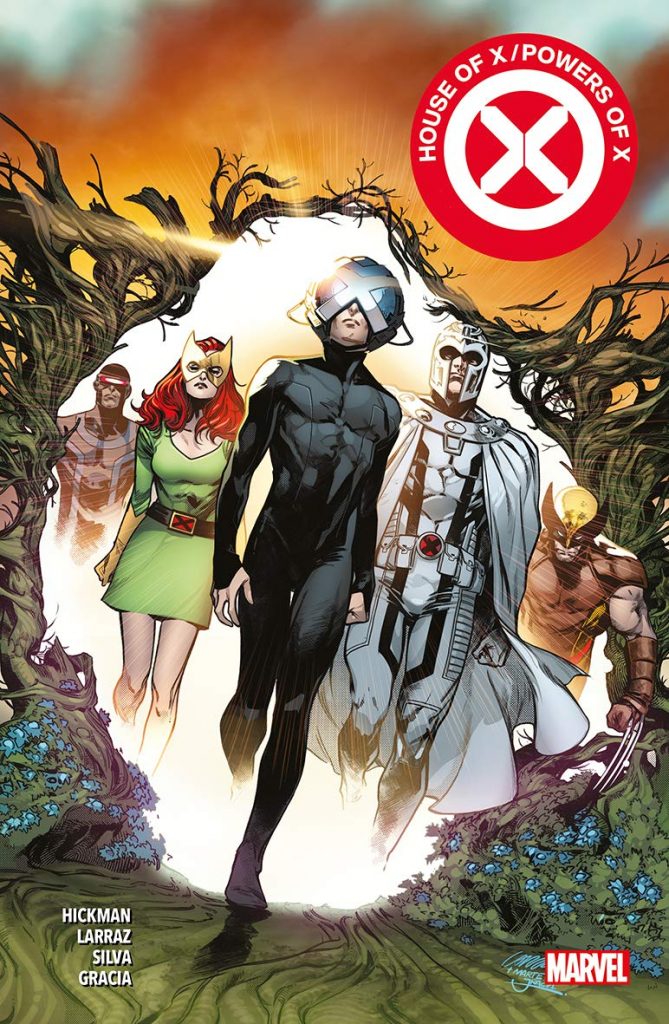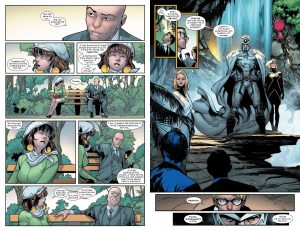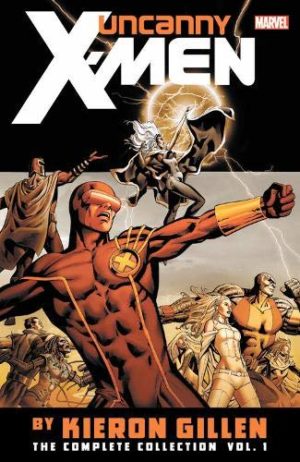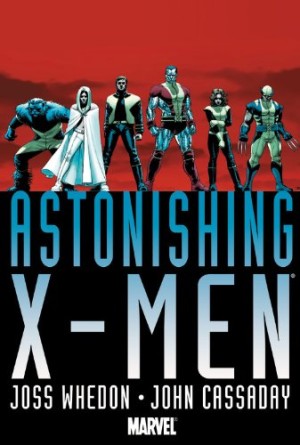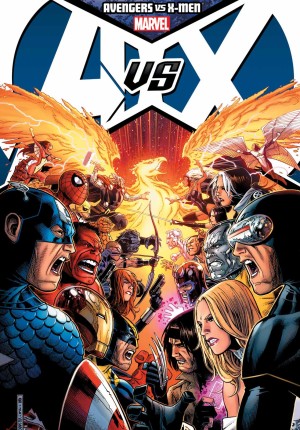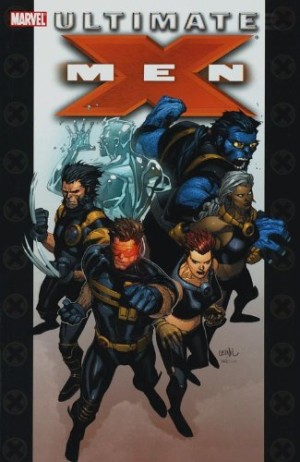Review by Frank Plowright
This begins Jonathan Hickman’s redefinition of the X-Men franchise, and was touted on release as an ideal rejoining point for lapsed readers. In the opening chapter Hickman makes a statement by at least glancing at a number of characters who were previously dead. Returning dead X-Men has long been clichéd, but late on Hickman turns that on its head. Otherwise it’s relatively straightforward at the start. Most opposing factions of mutants have made their peace to buy into Charles Xavier’s vision of a mutant nation on an island they’ve created. Countries that recognise the nation will be given plant-derived, illness-curing drugs developed by the X-Men.
The specifics of that, along with multiple points of background information, are supplied via text, diagram and pictogram pages, as Hickman seeks to classify and rank assorted species and concepts, a form he’s used since his earliest comics work. As House of X/Powers of X is a complex and ambitious story spreading across several time periods, these information inserts bear reading.
You have to head back to the days of Grant Morrison’s New X-Men for the last time the X-Men were treated to such a densely conceptual reboot, re-imagining their entire world and potential. Because there’s significant back story, the opening chapters are slow, but the third really kickstarts affairs with a brilliant re-imagining of old supporting character Moira McTaggart. It opens up different timelines, but each with near inevitabilities about them, and the meat of House of X/Powers of X, two separate stories when serialised, is two missions in different eras to prevent some technology coming online. The present day features the X-Men more or less as we know them, while a hundred years in the future genetic splicing has created familiar looking mutants with multiple abilities.
Pepe Larraz provides the comfort of the present day, while the dystopian future is illustrated by R. B. Silva, and although they’re similar in style, it’s Silva’s art that has the greater resonance (sample spread left). Larraz starts well, but as the story continues he concentrates on figures, leaving the colourist to fill in much of the background, while Silva more often offers something impressive.
Hickman wants us to reconsider what the cast do, but they’re broadly the same as before, given only minor tweaks (the campness of Mr Sinister ramped-up for one), with a single exception. In 1975 the first time the X-Men were rebooted they encountered a mutant island. Hickman has made Krakoa the centrepiece of the present day X-Men, providing a home, enabling transportation, rebirth and medicinal compounds. The wonder is great and frequent, but there’s no denying Hickman can also become infatuated with the detail and process, and the rebirth affirmation is especially twee, although how it applies to persistent pest Proteus is creative.
While it features a new guiding force, and takes a broad tour around the mutant community, it’s difficult to recommend this as the starting point for anyone who’s never read X-Men. So much of the wonder depends on the extrapolation of what’s already known about the characters, and the complexity renders House of X/Powers of X not the accessible treat publicity may have you believe. It certainly rebuilds the X-Men franchise and sets an agenda loose, and two clever contrasting chapters end this book. One in the present day is optimistic, the other in the future is one of dread. Something appalling hangs over the new vision, and that’s probably to be dealt with as Hickman continues the X-Men.
